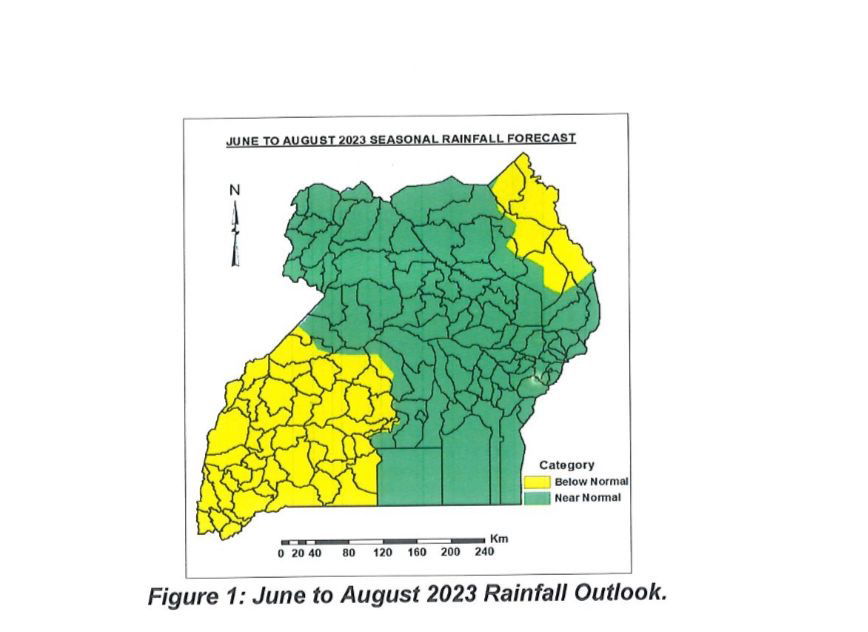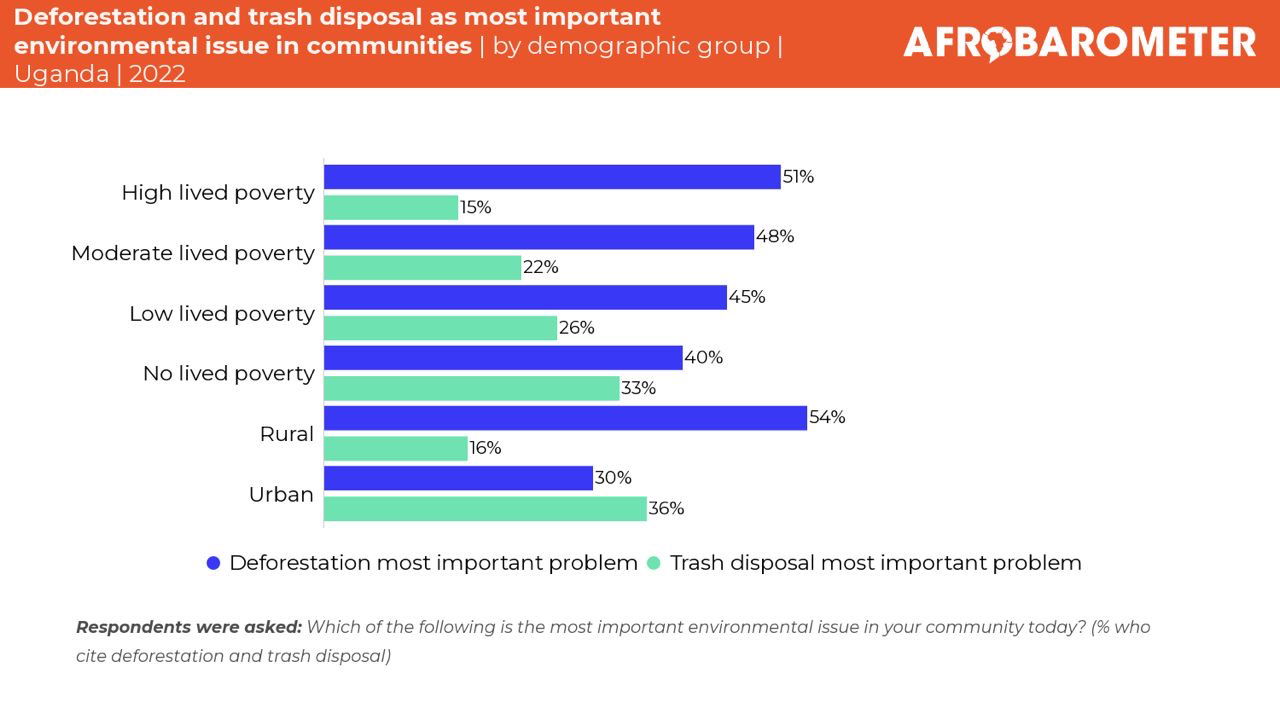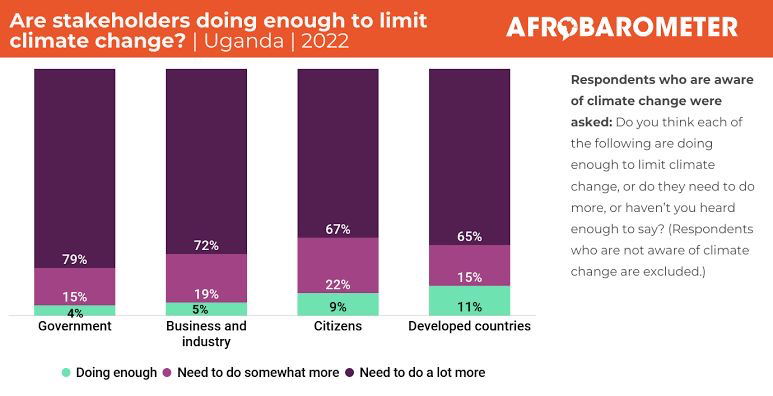Weather and climate for all


· 8 min read
Uganda’s climate is largely tropical with two rainy seasons per year, March to May and September to December. The northern region, which forms one quarter of the country lies outside the tropical belt and hence experiences only one rainy season from March to October. The rest of Uganda lies within a relatively humid equatorial climate zone, and the topography, prevailing winds, and lakes and rivers cause large differences in rainfall patterns across the country. Its location in the tropics and across the equator results in the country’s weather and seasons being determined by the large-scale Indian Monsoon, Congo air mass, Indian Ocean Dipole (IOD) and the Inter Tropical Convergence Zone (ITCZ) systems.
Overall, Uganda experiences moderate temperatures throughout the year. However, the country’s diverse topography results in wide-ranging temperature, from 0°C in the ice-capped Rwenzori Mountain Range and Mt. Elgon to 30°C in the north-eastern areas of Gulu, Kitgum and Moroto. The Rwenzori Mountain Range has permanent ice caps. However, due to rising temperatures, the area typically covered by ice reduced by 49% between 1987 to 2003 and is projected to disappear by the 2040s. This has implications for the area’s water resources, livelihood activities and is likely to change its epidemiological profile.
Uganda National Meteorological Authority (UNMA) reviewed the state of the global climate systems and their implications on the June, July and August (JJA) 2023 seasonal rainfall over the country. It was observed that the major physical conditions likely to influence the weather conditions for the forecast period are as follows:
The current status of seasonal forecasting allows for the prediction of spatial and temporal averages over larger areas and may not fully account for all physical and dynamic factors that influence short-term climate variability. The rainfall season of June, July and August (JJA) is generally a dry period over the southern parts of the country, especially in the south-western region, central region, Lake Victoria basin and parts of the eastern region. It also marks the end of the first rainfall season and a harvesting period for seasonal crops over the country. However, over most parts of the northern region, the JJA period is a continuation of the rainfall season.
Overall, there is an increased likelihood of near normal with a tendency to below normal rainfall over most parts of the country as shown by the map below (Figure 1).
Figure 1. June to August 2023 rainfall outlook

Uganda is at risk of natural disasters. The country experiences extreme weather events which lead to mudslides, landslides and flooding, particularly for the country’s mountain regions and related districts such as Mbale in the Mt. Elgon region. Extreme events leading to disasters such as floods, droughts, and landslides have increased over the last 30 years. Flooding has become more frequent, largely due to more intense rainfall. Over the past two decades, an average of 200,000 Ugandans were affected each year by disasters. The increased intensity of heavy rainfall has led to a greater impact of floods and is causing more damage due to expanded infrastructure, human settlement and general development of the country.
Uganda’s vulnerability to extreme weather events is exacerbated due to its high level of poverty and its high dependence on ‘climate sensitive’ sectors: agriculture, water, fisheries, tourism, and forestry. The country is at high risk of natural disasters such as flooding, drought, and landslides; however, its topographic diversity and highly marginalized segments of the population, make it even more vulnerable. Additionally, non-climate stressors such as inadequate infrastructure to handle the increasing population are also impacting the vulnerability to natural disaster sensitivity and climate change vulnerability. With an urbanization rate of 5.4%, increasing amounts of the population are living in urban areas, putting pressure on existing infrastructure as well as scarce available land, a diminishing natural resource.
As of 2017, 9.9 million people lived in urban areas of Uganda. This is projected to increase to 19.9 million by 2030 and 31.5 million by 2040, causing increased pressure on urban infrastructure with an increased likelihood of vulnerability for poorer and less-resilient communities. Economic efforts and the development of industry have put additional pressure on the exploitation of forests, lake fisheries, inner-city development, and agricultural lands, which has contributed to deforestation, overfishing, degradation of agriculture areas and forest environments, as well as the pollution and unsustainable use of water resources.
Poverty, land degradation, rapid and unplanned urbanization since the 1960s, and weak enforcement of building codes and zoning regulations, and a lack of coordinated disaster response strategies present additional challenges to the country’s adaption and resilience efforts. The country’s debt limits available resources and thus its ability to recover from disasters or provide necessary social protection. Environmental degradation, underdeveloped irrigation systems, and the near-absence of disaster preparedness at the community level are contributing factors to increasing drought risk in Uganda.
Figure 2. Deforestation or trash disposal as most important environmental issue in communities

Data from the Emergency Event Database: Presented in the table below, shows the country has endured various natural hazards, including floods, landslides, epidemic diseases, and storms.
Figure 3. Natural disasters in Uganda 1900-2020

Flooding, particularly in low-lying areas of the country, presents the largest risk. Each year, floods impact nearly 50,000 people and cost the country over $62 million. Uganda experiences both flash floods and slow-onset floods, which are common in urban areas, low-lying areas, areas along river banks and swamplands. Areas most prone to floods are the capital city, Kampala, as well as the northern and eastern areas of the country. Heavy rainfall in arid areas has led to flash flooding causing infrastructure damage. Areas such as Gulu District, face large challenges in the rainy seasons as large areas of the district become impassable, often resulting in food shortages and inaccessibility to health facilities and schools due to the destruction of roads and bridges from flooding.
Droughts affected close to 2.4 million people between 2004 and 2013, and drought conditions in 2010 and 2011 caused an estimated loss and damage value of $1.2 billion, equivalent to 7.5% of Uganda’s 2010 gross domestic product. Increasing heat conditions in the country are further exacerbating this problem. Severe drought in Uganda can result in human and livestock deaths and impacted areas are also experiencing reduced water tables, diminished water levels in major lakes as well as crop failures. Rapid population growth is also putting additional strain on depleted water resources. The most drought-prone areas in Uganda are the districts in the ‘Cattle Corridor’. Extreme drought has been most prevalent in the Karamoja region, which has resulted in frequent agricultural losses and significant food insecurity concerns. Increasing heat risks are expected to occur in areas with decreased water availability.
Findings from the most recent Afrobarometer survey show that Ugandans who are aware of climate change are solidly behind government action to address the crisis, even at a significant economic cost. They see addressing climate change as a collective responsibility, and they want greater engagement on the issue by the government, business and industry, developed nations, and ordinary citizens.
Figure 4. Are stakeholders doing enough to limit climate change?

Like many countries around the world, Uganda is experiencing significant impacts of climate change. Weather patterns are changing, and water levels in several water bodies are dropping. Extreme weather events such as floods, landslides, and prolonged droughts are becoming more frequent in the country, threatening people’s livelihoods (Irish Aid, 2016).
Uganda’s economy is heavily reliant on agriculture, making the country highly vulnerable to the effects of climate change. The government of Uganda has committed itself to the United Nations’ Framework Convention on Climate Change and the Kyoto Protocol, and has integrated climate change interventions in its Vision 2040 and five-year National Development Plan (Ministry of Water and Environment, 2015; Ministry of Finance, Planning and Economic Development, 2018). But building climate resilience will require concerted efforts from all stakeholders as well as substantial funding (Busby, Smith, White, & Strange, 2012).
Department of Disaster Preparedness and Management (2011). The National Policy for Disaster Preparedness and Management.
Ministry of Water and Environment (2015). Uganda National Climate Change Policy
Ministry of Agriculture, Animal Industry and Fisheries (2015). Uganda Climate Smart Agriculture Country Program 2015–2025
Treescape Planet. https://treescapeplanet.org/
USAID (2014). An overview of climate change and agriculture infrastructure in Uganda.
Future Thought Leaders is a democratic space presenting the thoughts and opinions of rising Sustainability & Energy writers, their opinions do not necessarily represent those of illuminem.
illuminem briefings

Climate Change · Effects
illuminem briefings

Oil & Gas · Ethical Governance
illuminem briefings

Climate Change · Insurance
Politico

Public Governance · Climate Change
The Guardian

Effects · Climate Change
Al Jazeera

Effects · Climate Change